
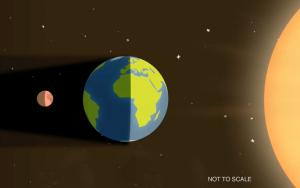
What is a lunar eclipse?
During a lunar eclipse, the Earth blocks most of the sunlight that normally reaches the Moon. The Earth is between the Sun and the Moon.
This is different from a solar eclipse, when the Moon passes between the Sun and Earth and blocks all or part of the Sun. In a solar eclipse, the Sun gets darker; in a lunar eclipse, the Moon gets darker. Visit our solar eclipse page to learn more.
Watch this NASA video to learn more about the different roles of the Moon in lunar and solar eclipses.
Upcoming Lunar Eclipses visible in North America
Sunday night March 24, 2024 into early morning of March 25, 2024 throughout North America.
The lunar eclipse will be visible throughout North America if the sky is clear.
Check here for exact timing for your location: https://www.timeanddate.com/eclipse/
If skies are clear, the eclipse will be visible to the unaided eye. It is safe to view a lunar eclipse without any eye protection. TimeandDate.com has a helpful interactive to search for your location to determine start and end time of the upcoming lunar eclipses:
Why Does the Moon Turn Red?
The Moon does not completely darken in the Earth's shadow during a lunar eclipse. Sunlight on the edges is scattered by the Earth's atmosphere, only allowing red light through to the Moon. This red light is reflected back to viewers on Earth who can see the lunar eclipse.
Watch this NASA video to see why the Moon turns red during a lunar eclipse.
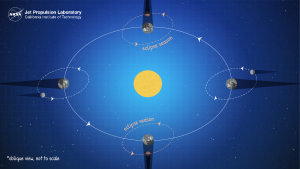
Additional Lunar Eclipse Resources
- Understanding Lunar Eclipses video
https://svs.gsfc.nasa.gov/cgi-bin/details.cgi?aid=11516 - Lunar phases and eclipses from NASA Science Solar System Exploration
https://solarsystem.nasa.gov/moons/earths-moon/lunar-phases-and-eclipses/ - What would Earth look like from the Moon during a lunar eclipse?
https://svs.gsfc.nasa.gov/4157 - Teachable Moment: How to Watch a Total Lunar Eclipse and Get Students Observing the Moon
https://www.jpl.nasa.gov/edu/news/2018/1/18/how-to-watch-a-total-lunar-eclipse-and-get-students-observing-the-moon/ - Teachable Moment: What’s a Supermoon and Just How Super Is It?
https://www.jpl.nasa.gov/edu/news/2017/11/15/whats-a-supermoon-and-just-how-super-is-it/ - What science can be done during a lunar eclipse?
https://www.nasa.gov/feature/goddard/2018/what-scientists-can-learn-about-the-moon-during-the-jan-31-eclipse
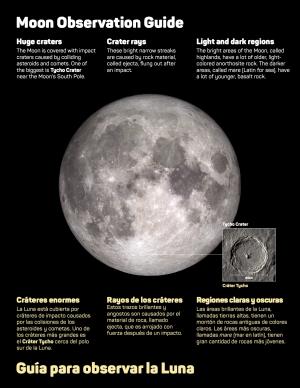
Related NISE Network Moon Activities
- Exploring Earth: Bear’s Shadow early childhood activity (included in the Explore Science: Earth & Space 2017 and 2020 toolkit)
https://www.nisenet.org/catalog/exploring-earth-bears-shadow - Exploring the Solar System: Big Sun, Small Moon activity (included in the Explore Science: Earth & Space 2017 toolkit)
http://www.nisenet.org/catalog/exploring-solar-system-big-sun-small-moon - Exploring the Solar System: Solar Eclipse activity (included in the Explore Science: Earth & Space 2017 toolkit)
http://www.nisenet.org/catalog/exploring-solar-system-solar-eclipse - Exploring the Solar System: Craters activity (included in the Explore Science: Earth & Space 2018 and 2020 toolkit)
http://www.nisenet.org/catalog/exploring-solar-system-craters-2018 - Exploring the Solar System: Hide and Seek Moon early childhood activity (included in the Explore Science: Earth & Space 2018 and 2019 toolkit)
http://www.nisenet.org/catalog/exploring-solar-system-hide-and-seek-moon-2018 - Exploring the Solar System: Moonquakes activity (included in the Explore Science: Earth & Space 2020 toolkit)
https://www.nisenet.org/catalog/moonquakes - Exploring the Solar System: Story Blocks activity (included in the Explore Science: Earth & Space 2020 toolkit)
https://www.nisenet.org/catalog/moon-story-blocks - Exploring the Solar System: Observe the Moon activity (included in the Explore Science: Earth & Space 2020 toolkit)
https://www.nisenet.org/catalog/observing-the-moon - Moon Adventure Game
https://www.nisenet.org/moongame
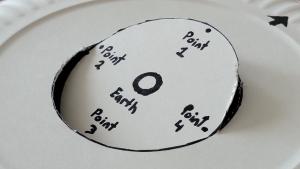
Related NASA Educator Guides and Activities
- Classroom Activity: Evaluating a Lunar Eclipse
https://www.jpl.nasa.gov/edu/teach/activity/evaluating-a-lunar-eclipse/ - Classroom Activity: Measuring the Supermoon
https://www.jpl.nasa.gov/edu/teach/activity/measuring-the-supermoon/ - Classroom Activity: When Do Lunar Eclipses Happen?
https://www.jpl.nasa.gov/edu/teach/activity/when-do-lunar-eclipses-happen/ - Student Activity: When Do Lunar Eclipses Happen?
https://www.jpl.nasa.gov/edu/learn/project/when-do-lunar-eclipses-happen/
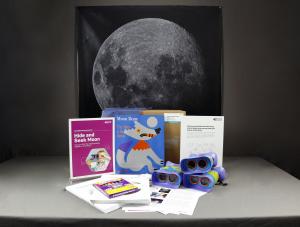
More Moon Resources
- Resources including observing guides, hands-on activities and games, public engagement resources for Artemis and Apollo Missions, and International Observe the Moon night event materials.
https://www.nisenet.org/moon
Finding STEM Experts
- Finding and Collaborating with STEM Experts: see the "Space and Earth Sciences" section of the Working with STEM Experts: A Guide for Educators in Museums and Other Informal Learning Settings
Cultural Connections
- Indigenous Education Institute (IEI) Indigenous Eclipse Teachings Video - includes Navajo and Cherokee teachings on solar eclipses
- Resources Connecting Eclipses and Other Fields (Particularly the Humanities) compiled by Andrew Fraknoi (2022)
Night Sky Storytelling
- The Astronomy of Many Cultures: A Resource Guide compiled by Andrew Fraknoi
- NASA's Universe of Learning Native American Sky resources:
https://universe-of-learning.org/contents/events/science-briefings/science-briefing-the-native-american-sky - Audio stories about the Moon from Lunar Planetary Institute (LPI)
https://www.lpi.usra.edu/education/explore/marvelMoon/tales/ - Moon myths from around the world - Night Sky Network and Astronomical Society of the Pacific (ASP)
https://nightsky.jpl.nasa.gov/download-view.cfm?Doc_ID=642
Downloadable handout: https://nightsky.jpl.nasa.gov/docs/MoonStoriesASP2019.pdf
Create your own Moon story handout: https://nightsky.jpl.nasa.gov/docs/CreateMoonStory.pdf - Cosmic Serpent - Bridging Native Ways of Knowing and Western Science in Museum Settings
https://www.informalscience.org/sites/default/files/CS-LegacyDoc27Nov2012.pdf - Native Sky Watchers - Two Eyed Seeing – NASA & Indigenous Astronomy – For the Benefit of All
https://www.nativeskywatchers.com/two-eyed-seeing-nasa.html - Indigenous Education Institute (IEI): http://indigenouseducation.org
- Smithsonian National Museum of the American Indian Star Stories:
https://www.youtube.com/playlist?list=PLS6nSmuURFJBLIE-4ulPJMYxOV4Zpj1WZ - Learn more about Indigenous ways of knowing and making local connections in the NISE Network guide Working with STEM Experts: A Guide for Educators in Museums and Other Informal Learning Settings
